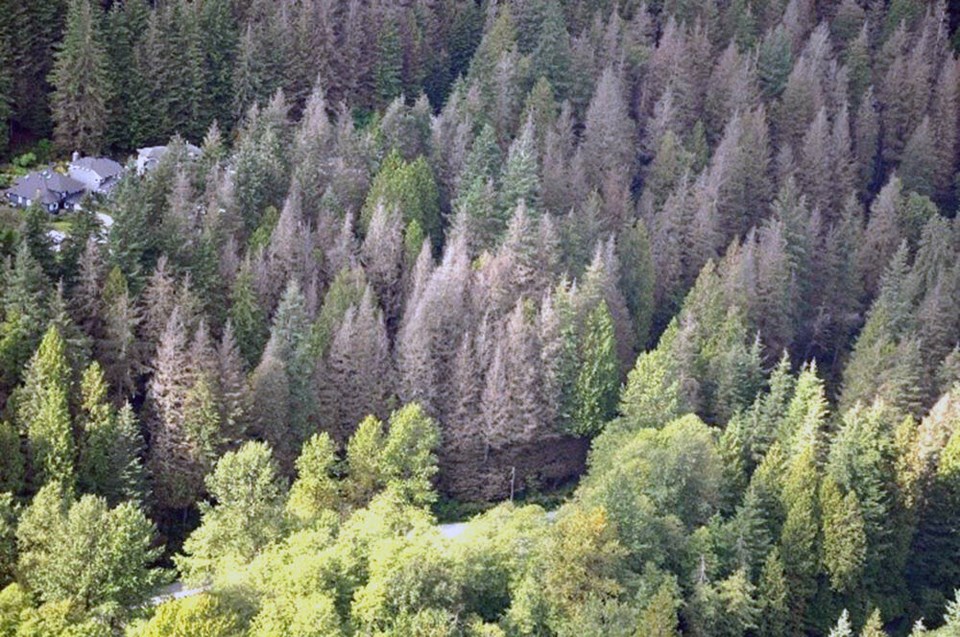Metro Vancouver contractors will soon resume cutting down a swath of trees in Lynn Headwaters Regional Park after an outbreak of looper moths left them dying or dead.
Western hemlock Looper moths are a native species that go through a cyclical population boom every 11 to 15 years. The larva, which look like inch worms, munch on the needles of and defoliate hemlock, Douglas fir and Western red cedar trees.
The current outbreak of moths peaked in 2020 and local governments are now starting to get a handle on the level of tree mortality.
Metro cut down about 100 trees from a 3.2-hectare area around the entrance Lynn Headwaters in October but regional parks manager Paul Brar said many more will have to come out in the new year. The area is on a steep slope with houses, a road and hikers nearby.
“This particular area was hit really hard and it’s a bit tricky for us,” he said. “It’ll be a significant tree removal, because there’s quite a number of them that are dead.”
Although the looper moths are bad news for individual trees, they can be good news for the biodiversity of forests as a whole, as the naturally occurring outbreak opens up gaps in the canopy allowing saplings of other species of trees to sprout up in their place.
Metro’s plan calls for reforestation with species that will be more resilient to future outbreaks.
In other areas where there has been a die-off but there is no threat to public safety or infrastructure, Metro will be letting nature take its course.
Anyone travelling up the Grouse Mountain Skyride in the last two years will have noticed the foliage on west side of the Capilano Reservoir turning orange.
“There’s not a particular concern for water quality at this time, but obviously we keep a really close eye on it,” said Jesse Montgomery, acting director of watersheds and environment for Metro Vancouver. “We’ve got some academic research involved and we’re working with professional foresters for underplanting of other tree species.”
Grouse Mountain Regional Park and the Lower Seymour Conservation Reserve are having assessments done as well but so far it appears it was just Lynn Headwaters that requires hazardous trees to be cut down.
“We don’t know why they struck there,” Brar said.
During an outbreak about 20 years ago, it was the Coquitlam watershed that was particularly targeted, Brar said.
The District of West Vancouver has been inspecting trees that members of public report as being possibly dangerous.
“Staff have dealt with a few trees on public boulevards that became hazardous because of the looper moth infestation. Staff are also monitoring other district trees that have been reported to the municipality to see if they will recover over time. Generally, the overall impact in the urban area has been low,” West Vancouver spokesperson Donna Powers said.
The District of North Vancouver will be doing an assessment for damage done by the looper moths in 2023.



